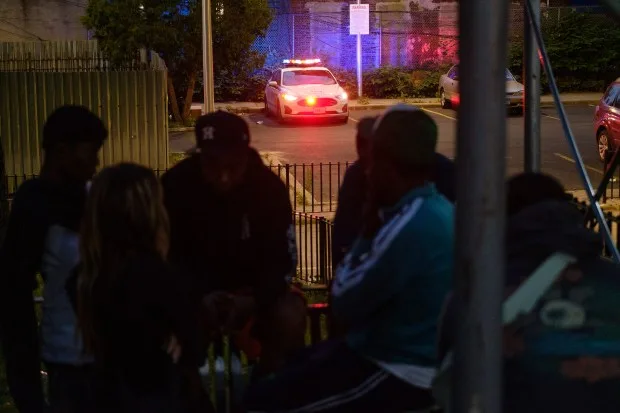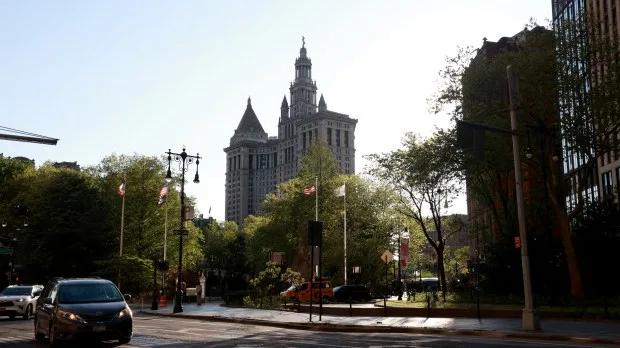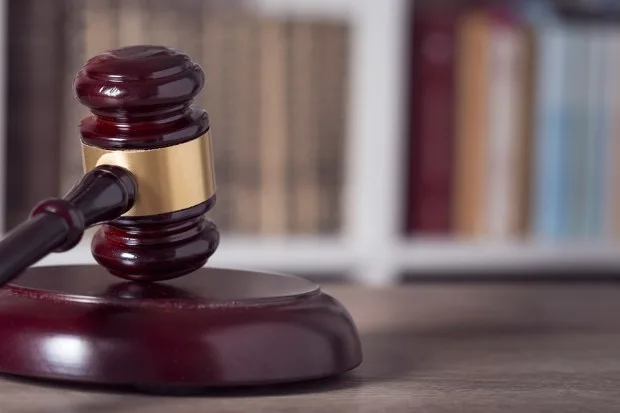Nearly every weekday morning, hundreds of New Yorkers from across Manhattan and Brooklyn make their way to the 16th floor of the Municipal Building near City Hall to deal with low level summonses issued by the NYPD.
They face a more elaborate security system than is typical in higher-level courts, having to march through one set of metal detectors on the ground floor, which is controlled by the city, and a second set on the 16th floor, which is controlled by the state court system.
They then are required to check in with a clerk before what is often an hours-long wait for their cases to be called.
Over the past year, business in this little-observed backwater of the criminal justice system has accelerated as a result of the Adams administration’s low-level enforcement campaign targeting so-called quality of life crimes — a strategy that has caused tensions in some neighborhoods.
On many days, lawyers and court workers say, the docket in the 16th floor courtroom bulges with 500 to 700 names of people swept up in the NYPD campaign, largely on charges like disorderly conduct, trespassing, possession of an open container, or smoking marijuana in a park or in a parked car.

Gardiner Anderson for New York Daily News
An NYPD cruiser sits with its flashing lights on as residents congregate outside the NYCHA Howard Houses in Brownsville, Brooklyn.
Occasionally, there’s a littering case. The charge of riding a bicycle on a sidewalk — sometimes a moped or e-bike — are also common.
The NYPD has also been writing summonses for unlicensed food vending for people officers claim are selling marijuana. The language in the summons is “green vegetative substance for consumption,” says lawyer Gideon Oliver, who regularly defends people in summons court.
Figures supplied by the Office of Court Administration show 38,387 people appeared for criminal court summonses citywide in 2022 through the month of August, versus 70,618 in the same period of 2023 — an 84% increase.
In Manhattan, the increase jumped by 109% from 6,167 in the first eight months of 2022 versus 12,921 in the same period of 2023. In Brooklyn, there was an 112% increase, from 12,347 in the first eight months of 2022 to 26,140 in the first eight months of 2023.
The racial disparity is stark. On a recent day when 550 people were on the docket, the vast majority were Black or Hispanic, with a tiny handful of white folks dotting the gallery.
Overall, the court figures show, 58% of people who got summonses in 2023 were Black or Hispanic, while just 6% were white and 4% were Asian. Race was not listed in 21% of cases.
That’s out of line with US Census figures from 2022, which show whites make up 40% of the city’s population, Blacks make up 23% and Hispanics make up 29%.
“It’s like the Giuliani era all over again,” Oliver said. “Back then, it used to be you show up in summons court, and there was a line out the door. Before Adams, there was a significant dip. Now on many days, once again, it’s lines out the door.”

Each case is conducted in perfunctory fashion, with hearings taking less than two minutes. Many cases result in fines of $25 to $50 and a guilty plea to a non-criminal city code violation.
Many other cases end up in “adjournment in contemplation of dismissal,” or ACD. Under an ACD, if a person is not arrested again in six months, their case is dismissed and sealed.
That was the outcome for a 17-year-old boy recently charged with disorderly conduct in Brooklyn for asking cops, “Why are you arresting my mom?”
Also getting an ACD was a woman in her twenties charged in Brooklyn with possessing an open container of alcohol and disorderly conduct. She took the ACD because, her lawyer said, she didn’t want to miss another day of work.

Luiz C. Ribeiro for New York Daily News
Cases in the 16th floor courtroom include charges such as disorderly conduct, possession of an open container, or smoking marijuana in a park.
Quite often, the minor charges are dismissed because the police officers fail to fill out the tickets properly. “We’re not asking Rhodes Scholars to write these,” cracked Judge Pamela Goldsmith, an Adams appointee.
To a man charged with getting stoned in a car, Goldsmith admonished, “I know it [marijuana] is legal, but you can’t smoke marijuana in a car.”
She tells another defendant, “Don’t smoke anything in the park.” City rules bar smoking in public parks.
The summons campaign is key to the NYPD’s crime-fighting strategy under Mayor Adams in a way that recalls the “broken windows” campaign of ex-Mayor Rudolph Giuliani’s terms that in the 1990s was credited with bringing a steep drop in violence.
The Police Department also says the campaign responds to city residents’ legitimate concerns.
“For the more than 400,000 times citywide residents have called 311 to report quality of life complaints so far this year, including public urination, littering, alcohol consumption, park violations and unreasonable noise, and for all those who suffer in silence, these are serious issues,” the department said in a statement.
“Quality of life complaints, which are often a precursor to violence, remain a real concern to residents in all city neighborhoods.”
Civil rights lawyer MK Kaishian disputes the NYPD’s position that the summons campaign has value in improving public safety.
“Police know that charging a victim of their abuse with a crime is an effective way to discredit that person to the legal system and the public,” Kaishian said.
“Certain civil rights claims are also eliminated when a person takes a plea, even to non-criminal violations, regardless of the illegitimacy of the original police conduct.
“It’s an incredibly coercive process that is being rubber-stamped by the judiciary and the City of New York.”
Daniel Pelli, a defense lawyer who handles cases in summons court, says there’s a balance that has to be struck.
Close,Up,Of,A,Judge,Gavel,And,Law,Books,In
Shutterstock Courtroom on the 16th floor of the the David N. Dinkins Manhattan Municipal Building has been busy with quality of life criminal cases.
“If a guy is drinking a beer quietly on his stoop, not causing trouble, is it fair to charge him? Sometimes, the police do take advantage of these statutes in a way that’s not clearly helpful to quality-of-life issues.” Pelli said.
“On the other hand, quality of life in the city is an issue. I don’t want a lot of drinking on the street with loud noise and carrying on.
“So I think there should be a more targeted application of the statutes. Sometimes, they are applied in an inefficient and unfair way. In the end justice is served in the courtroom and that’s what it’s about.”
Kaishian and Oliver say despite the small fines and inconveniences, there are more serious consequences, like time lost from work or childcare from repeated court appearances.
“A lot of people think these are just tickets, and some people can eat the fine and plead to the violation,” Oliver said. “But each visit means a half day at least out of work. If you want to fight the charge, it involves coming back to court multiple times.”
He noted a guilty plea to a summons can lead to someone being ousted from public housing, for example.
“There are consequences on jobs, housing, people with immigration issues,” he said. “It’s a high cost for something that’s not really effective as an enforcement tool.”

